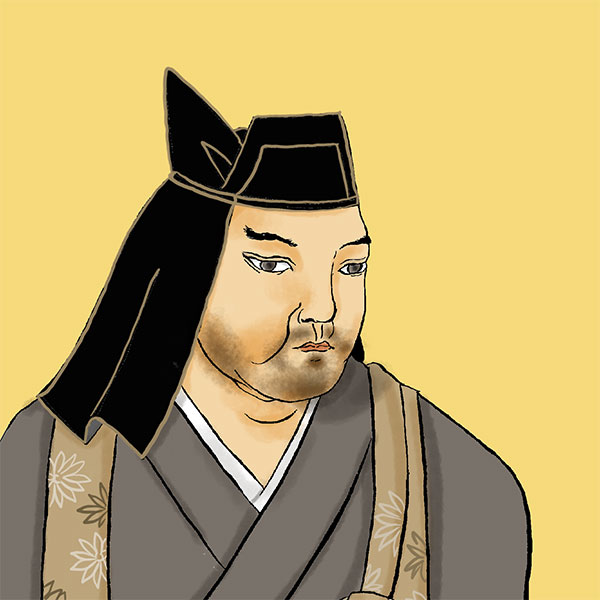- Takada DomainMany transfers of related clans and fudai daimyo
- Takada Domain was a domain located in Echigo Province (near Joetsu City, Niigata Prefecture). It was sandwiched between the Echizen Fukui Domain, which had a high rice yield, and the Kaga Maeda Domain, and was considered important by the shogunate when it was established as a watchdog for the outside daimyo located on the Japan Sea side in the Hokuriku and Tohoku regions.

Takada CastleJoetsu City, Niigata Prefecture
- spring
- summer
- autumn
- winter
- TOP
- Chubu
- Niigata Prefecture
- Takada Castle
| Other name | Samegajo, Sekijo, Koyojo |
|---|---|
| castle construction | 1614 |
| address | 6-1 Honjocho, Joetsu City, Niigata Prefecture |
It is characterized by a flat castle without a castle tower and stone walls. A triple turret was built in place of the castle tower.
- Access to Takada Castle
- Approximately 20 minutes walk from Takada Station on the Echigo Tokimeki Railway.
HISTORYTakada Castle, also associated with Date Masamune
Takada Castle is a flat castle located in Honjo, Joetsu City, Niigata Prefecture. Also known as Samega Castle, it was built as a national construction project by the Edo Shogunate as the residence of Matsudaira Tadateru, the sixth son of Tokugawa Ieyasu. It is also known that Date Masamune was the general director of the construction of the castle. Let's take a look at the history of Takada Castle.
- Built as Matsudaira Tadateru's castle
- Joetsu City, Niigata Prefecture, where Takada Castle was built, was ruled by Hori Hideharu, who had been the ruler of the Gamo clan and the Uesugi clan. Hori Hideharu participated in the battle of Nagoya Castle during the Bunroku War and contributed greatly to the construction of Fushimi Castle, and at the young age of 24, he was transferred from 180,000 koku in Kitanosho, Echizen, to 300,000 koku in Kasugayama, Echigo. However, after Toyotomi Hideyoshi died, he approached Tokugawa Ieyasu, and sided with the Eastern Army in the Battle of Sekigahara in 1600. As a result, he was granted his territory, but died at the young age of 31 in 1606. His eldest son, Hori Tadatoshi, succeeded him, but because he was only 11 years old, a conflict arose between the chief retainer Hori Naokiyo and his half-brother Hori Naoyori, who held real power in the domain. (Echigo Fukushima Disturbance) As a result, the Hori family was abolished and Matsudaira Tadateru, the sixth son of Tokugawa Ieyasu, was transferred to this area from Nakajima in the Shinano River instead. The Hori family built Fukushima Castle, but Matsudaira Tadateru destroyed it and built Takada Castle. Takada Castle was built as part of the Tenkafushin program, and the person in charge of the construction was Date Masamune, Matsudaira Tadateru's father-in-law.
Takada Castle was built on Bodaigahara in the Takada Plain, with Ninomaru (second castle) surrounding Honmaru (main castle), Sannomaru (third castle) on the south side, and Kitamaru (northern castle) on the north side. The Sekigawa, Aotagawa, Yashirogawa, and Gimeigawa rivers were diverted and used as moats, with only the Hyakkenbori (100-ken moat) on the south side being an artificial moat. It is said that earthworks were built around the enclosures, but no stone walls were, but recent investigations have revealed that there may have been stone walls around Honmaru (main castle). One theory as to why no stone walls were built, even though it was the castle of Ieyasu's eldest son, is that the construction was rushed, and the ground was too soft to build a foundation strong enough to support the stone walls. Bodaigahara was a low-lying marshland, so Takada Castle was also equipped with culverts as drainage facilities, and the construction technology was comparable to that of today.
Construction of Takada Castle began in March 1614 (Keicho 19), and the basic construction was completed by July. However, the Siege of Osaka broke out soon after, and Matsudaira Tadateru, who was supposed to be the lord of the castle, was demoted, so construction of Takada Castle was left unfinished for some time, with important parts such as the turrets remaining. It is said that the turret, which replaced the castle tower, was built by Matsudaira Mitsunaga more than 10 years after the basic construction was completed. Furthermore, many buildings in Takada Castle were damaged in the Takada earthquake that occurred in 1655 (Kanbun 5), and there are records that a new three-story turret was built. Takada Castle then functioned as the administrative office of the Takada Domain until the Meiji Restoration. - Takada Castle after the Meiji Period
- In 1870, a fire destroyed the Honmaru Palace and the three-story turret of Takada Castle. Three years later, in 1873, an order to abolish castles was issued and the buildings that had escaped the fire were demolished. The site became a garrison for the 13th Army Division and a castle park, and 3,000 Yoshino cherry trees were planted to commemorate this. After the abolition of the feudal domains and the establishment of prefectures, the finances of the domain were depleted by the Boshin War and poor harvests, and samurai had no means of earning an income. To provide employment for these samurai, a man named Hosaka Sadakichi began cultivating lotus roots using the outer moat. Cultivation of lotus for the purpose of harvesting lotus roots ended in the 1950s, but lotus is still cultivated for decorative purposes in Takada Castle Park today.
Currently, the Takada Castle ruins are designated as a Niigata Prefecture designated historic site. In 1993, the three-story turret was restored to commemorate the 20th anniversary of the founding of Joetsu City, and in 2002, Gokuraku Bridge, which connected the Ninomaru to Honmaru, was also restored based on excavation surveys. The restored three-story turret is made of reinforced concrete, but the ceiling on the top floor is made of authentic wooden framework. Inside is a museum and exhibition room, and it is a tourist spot representing Joetsu City. In 2017, it was selected as one of the 100 Most Famous Castles in Japan (number 132). - summary
- Currently, Takada Castle has become a castle park, and the restored three-story turret is a popular tourist spot and a place for local residents to relax. Takada Castle Park is an urban park that boasts an area of 50 hectares, and is a popular spot for cherry blossoms in spring and lotus flowers in early summer.
Read biographies related to Takada Castle
- Kenshin UesugiA warrior known as the god of war
- During the Sengoku period, one of the essential qualities for many military commanders was military talent. There are ways to use military commanders and talented vassals, but the best option is for the military commander himself to be skilled in warfare. There are many military commanders who are known to be good at fighting, but

History of the Takada Domain, with Takada Castle as its domain office
| Domain office | Takada Castle |
|---|---|
| old area | Echigo country |
| stone height | 150,000 koku |
| Fudai/Tozama | Fudai |
| main lord | Mr. Matsudaira, Mr. Inaba, Mr. Sakakibara |
| Estimated population | 170,000 people (first year of the Meiji era) |
After Tadaki Matsudaira was transferred, the Sakai family, Inaba family, Toda family, etc. were included. Finally, the Sakakibara family is included.













